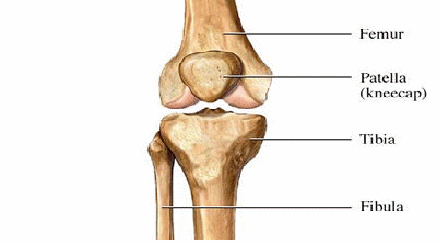The knee joint performs similar to a hinge joint. It consists of three bones:
-
Thigh bone (Femur)
-
Leg bone (Tibia)
-
Knee cap (Patella)
-
The two joints, where the femur joins the tibia and the patella joins the femur, allow the bending and straightening of the knee. It is these joints that are replaced in a total knee joint replacement.

For a knee to function normally, the joints, where the bones move relative to each other must be smooth. The surfaces of all three bones coming into contact with each other are normally covered with a smooth gliding surface known as articular cartilage. The condition of this cartilage lining the knee joint is a key aspect of normal knee function and is important to the physician when evaluating a potential need for a knee joint replacement.
A worn out or damaged knee joint can now be replaced with an artificial joint. The artificial joint or prosthesis generally has two components, one made of metal which is usually cobalt -chrome or titanium. The other component is a plastic material called polyethylene.

The artificial joint generally has a long lifetime and allows quite an active life and normal activities.
